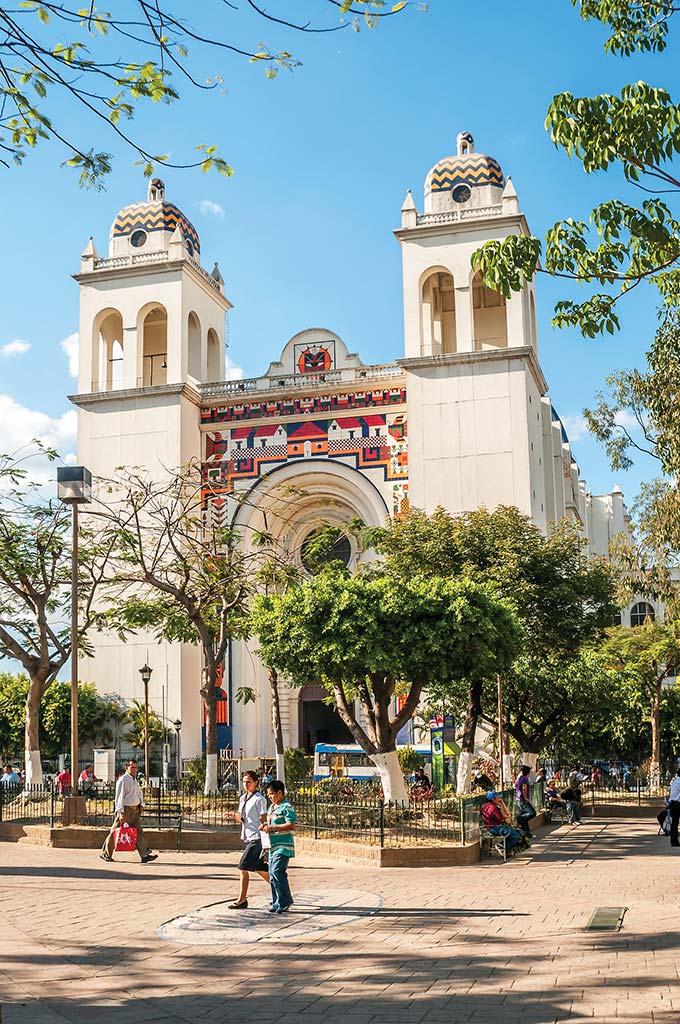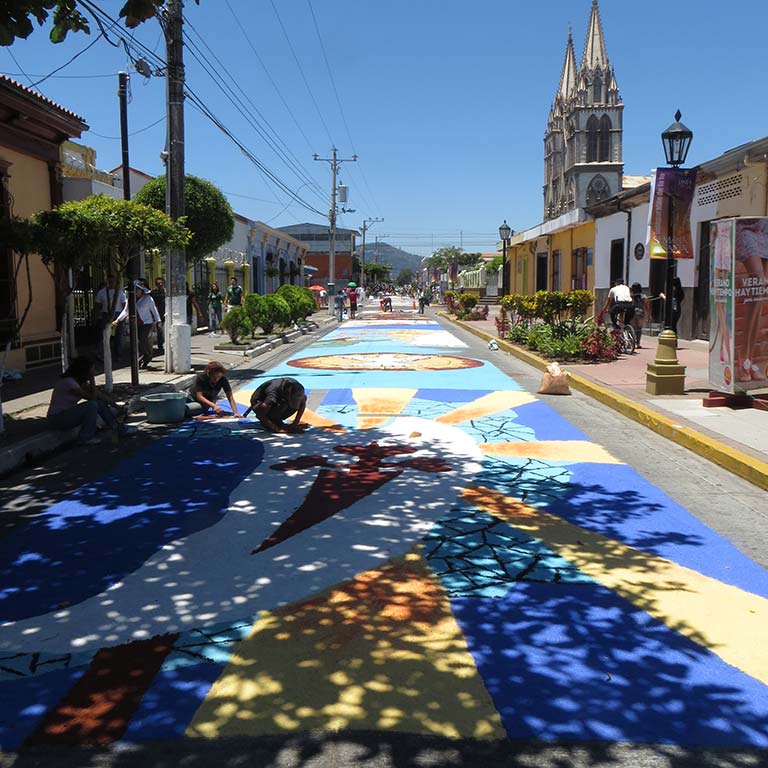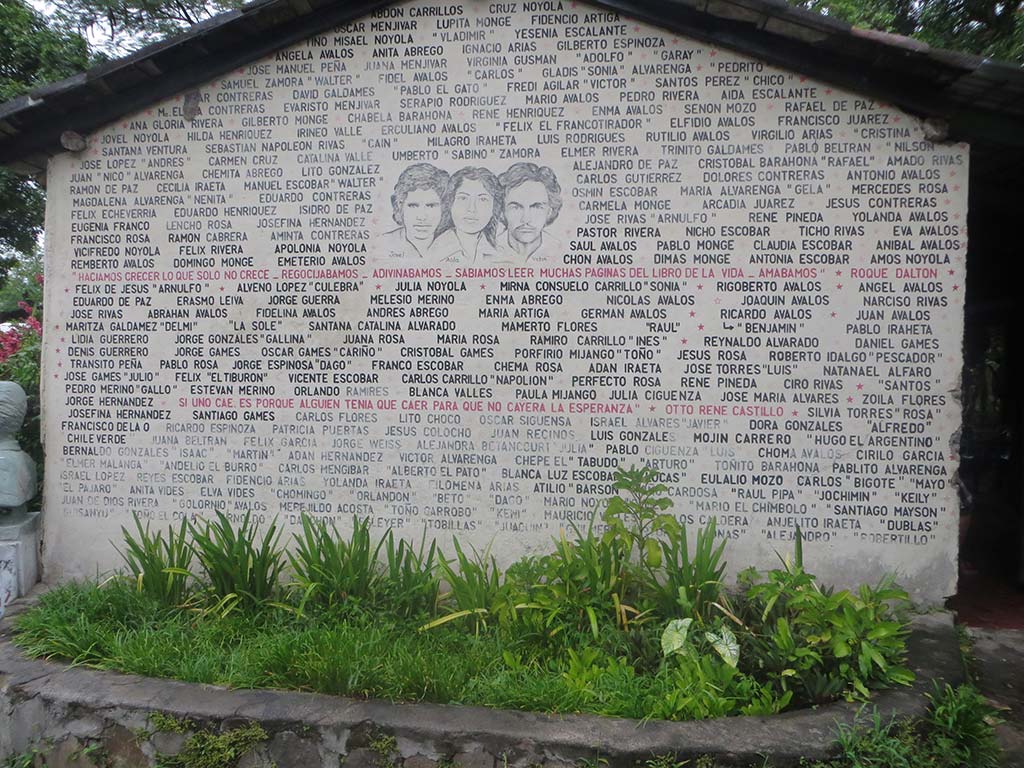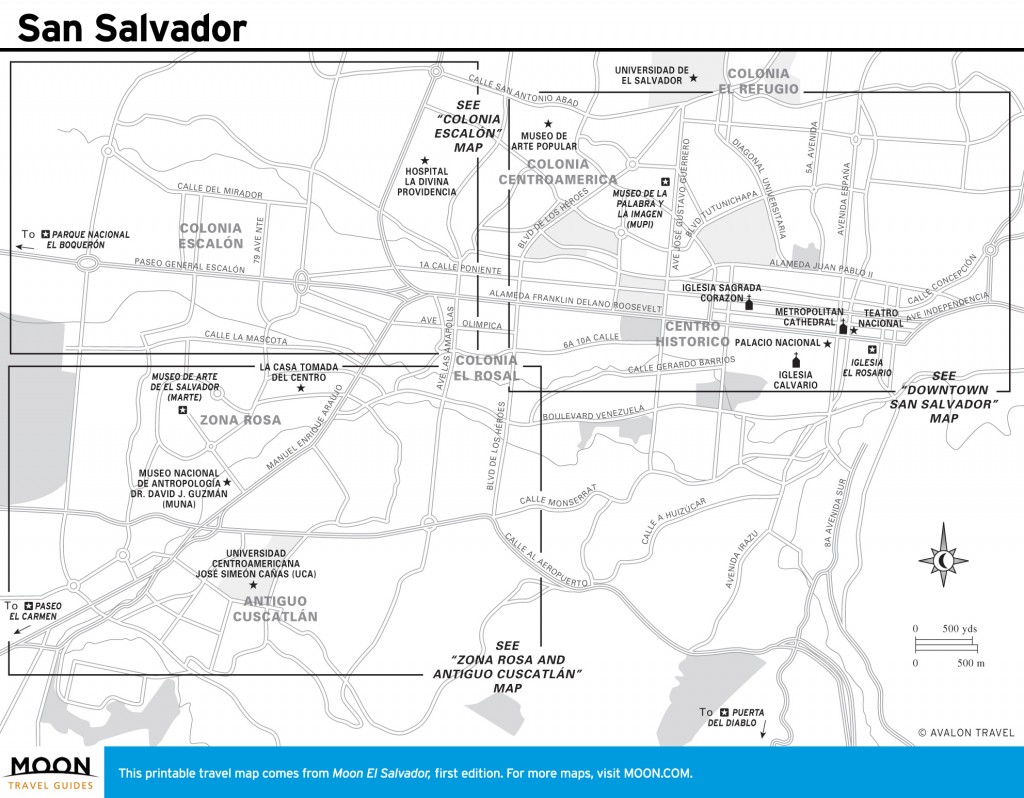Chaotic, congested, and consistently noisy, San Salvador is El Salvador’s capital and resilient urban heart. Battle hardened by civil unrest and natural disasters, the city bears the scars of its past with a fierce determination to create a better future, and it seems that perhaps finally, the tide is turning.
You can see it in the world-class restaurants and homegrown cafés popping up in the affluent Zona Rosa, and in the yoga studios and independent boutiques on the tree-lined streets of Colonia Escalón; but most significantly you can see it in the city’s Centro Histórico, where, until recently, most middle-class Salvadorans dared not go since the war ended in 1992. Today, however, the well-heeled are returning to nights out at the Teatro Nacional; bargain hunters are hitting the sprawling, informal market to shop for clothes; and brightly colored murals are turning up between the crumbling buildings and bullet-scarred walls. The young people of San Salvador are taking the first cautious steps toward reclaiming their city and building it into something they can call their own.

Catedral Metropolitana in San Salvador. Photo © Milosk50/Dreamstime.
It’s an exciting time of transition, and as a visitor, there is much to see and do. In fact, San Salvador can be the perfect base for your travels, with all of the comforts and amenities you need and many of the country’s top sights within a short bus ride away, including Parque Nacional El Boquerón, the ruins of San Andrés and Joya de Cerén, and Lago Ilopango. You can complement your day trips with visits to museums and churches, both of which will give you a deeper insight into the turbulent history of the country. The Catedral Metropolitana and Iglesia El Rosario are not only beautiful but help put the role that religion played in the civil war into context. The Museo Nacional de Antropología Dr. David J. Guzmán (MUNA) is an excellent way to learn more about pre-Hispanic and colonial eras, while the Museo de la Palabra y la Imagen (MUPI) will appeal to literature lovers and history buffs alike, honoring El Salvador’s revolutionary writers and journalists, with a focus on work that came out during the civil war.
For entertainment in San Salvador, remember to look past the sprawling shopping malls and American chains and you will find restaurants and bars to suit any budget and taste, including cheap and delicious street food, artsy cafés with live music and poetry, and stylish fine dining. Finally, just a short cab ride away is Paseo El Carmen in the suburb of Santa Tecla, an essential weekend day trip, where a pedestrian walkway offers stall after stall of delicious traditional and international fare, live entertainment, and quaint cafés and pubs that come to life after dark.

Paseo El Carmen. Photo © Jaime Jacques.
San Salvador was founded in 1545, after two other attempts to establish the colonial capital north of the city near Suchitoto. The settlements in Suchitoto failed due to fierce resistance by the indigenous Pipil people, sending the Spanish to look for greener pastures. Motivated by the size of the land and the fertility of the soil around present-day San Salvador, they settled here. The city began where Plaza Libertad now stands and grew from there, with help from income gained from añil (indigo), cacao, balsam, and other profitable crops.
San Salvador played a pivotal role in the years leading up to the independence of Central America. This is where the first uprisings against the Spaniards took place, in 1811 and 1814, and although the independence movement gained momentum quickly, the revolution was still in the distant future. After the uprisings, any kind of rebellion was swiftly cut down by the Spanish. In the years to follow, pockets of resistance secretly grew until September 15, 1821, when El Salvador officially became part of the Federal Republic of Central America before achieving its own independence in 1834. San Salvador has been the capital ever since.
During the second half of the 19th century, the city really began to take shape, thanks to the profits from El Salvador’s newest cash crop: coffee. Architecture began to take on the neoclassic and neo-Gothic styles of Europe, and luxurious palaces, theaters, and churches began to pepper the city center. The growing splendor continued until the 1960s, when the highly industrialized nation became the third-largest coffee exporter in the world. However, natural disasters often cruelly reversed the city’s growth; most famously the earthquake of 1873 that destroyed much of the city, and the eruption of Volcán San Salvador in 1917 that also caused significant damage. The 1986 earthquake caused mass destruction of the city center, resulting in the evacuation of virtually all residents and businesses, paving the way for mass migration of the nation’s disadvantaged to take over the abandoned streets for informal trade.
The capital also saw its share of violence during the civil war. The historic center was the scene of many antigovernment protests and saw the murder of many protesters by national security forces. Other neighborhoods were targeted by guerrillas for being pro-government. Civilians in the capital lived under a strict curfew and in constant fear, no matter what their political stance. Weapons proliferated and the situation grew tenser until the Farabundo Martí National Liberation Front (FMLN) undertook its largest offensive in November 1989, when its guerillas stormed the city and took control of many poor neighborhoods. The Salvadoran government responded by bombing the occupied parts of the city. Many civilians were killed in the process.

Civil war memorial in Cinquera. Photo © Jaime Jacques.
In 1992, the Chapultepec Peace Accords were joyously celebrated in front of the Catedral Metropolitana in the city center, but to this day many Salvadorans still have an underlying fear about being in crowded areas in the city, especially the Centro Histórico, where so much senseless violence took place. Today the city of San Salvador has a population of around 2 million, and many of these people live and work in the center of the city.
The city’s three main tourist areas, the Centro Histórico, Colonia Escalón, and Zona Rosa, are all connected by the primary east-west highway, called Alameda Roosevelt east of Plaza de Las Américas and Paseo General Escalón west of the plaza.

San Salvador
Bulevar Monseñor Romero is another major east-west road connecting the city of Santa Tecla and the neighborhood of Antiguo Cuscatlán, finally merging in San Salvador with Bulevar los Próceres, which later turns into the road to both Planes de los Renderos and the International Airport.
The main north-south route is through El Centro and known as Avenida España north of Plaza Barrios and Avenida Cuscatlán south of the plaza. The other main north-south route is Avenida Norte, which becomes Bulevar de los Héroes and splits the city in two. The neighborhoods north of the Centro Histórico around Bulevar de los Héroes, Metrocentro and the Universidad de El Salvador (the national university) are considered the downtown area.
Roads in the capital are called calles if they run east-west, and avenidas if they run north-south. Road numbering starts at the downtown intersection of Avenida España/Avenida Cuscatlán and Calle Delgado/Calle Arce. Avenidas that fall west of this intersection have odd numbers, and to the east, even numbers. Calles have odd numbers if they are to the north of the intersection, and even numbers if they are south of the intersection.
Excerpted from the First Edition of Moon El Salvador.